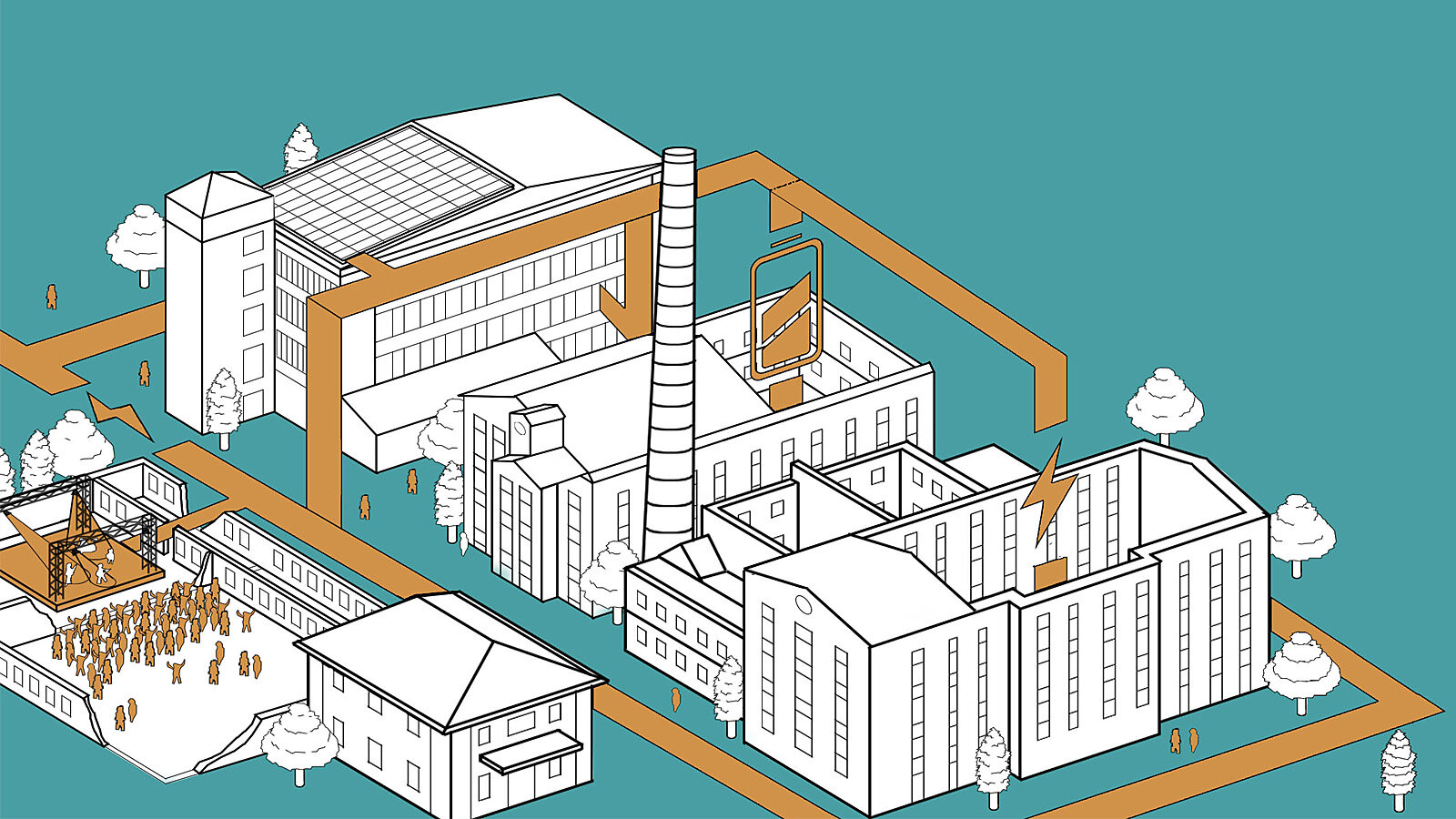How Monuments of Industrial Culture Can Contribute to a Positive Energy Balance
Sustainable use of former factories in the Chemnitz region: German Federal Environmental Foundation supports Chemnitz University of Technology in the development of a concept study for the revitalization of brownfield sites
-

As part of the ENICU project, Chemnitz University of Technology and its project partners are developing a concept for the sustainable use of former factories in the Chemnitz region. Graphic: Project ENICU
As part of the project "Energie-Kultur-Fabriken im Chemnitzer Umland" (ENICU)(Energy Culture Factories in the Chemnitz Region), the German Federal Environmental Foundation is funding the Professorship of Power Systems and High-Voltage Engineering (Professorship representative: Dr. Jens Teuscher) at Chemnitz University of Technology in the development of a concept study. The aim is to identify suitable buildings for sustainable use in Limbach-Oberfrohna, Flöha, Burgstädt, and Werdau, among others. The buildings should be particularly suitable for mixed use, which includes the use of renewable energies and the revitalization of the buildings by artists and tradespeople. The funding amounts to around 124,000 euros and will be made available until the end of 2023.
The project partners on board are the Chair of Architectural Conservation and Design (Head: Prof. Dr. Claudia Marx) at TU Dresden and the Gesellschaft zur Rettung von Industriebaukultur in Sachsen (gribs)(Society for the Rescue of Industrial Building Culture in Saxony). The patron of the project is Reiner Nagel, Chairman of the Board of the Bundesstiftung Baukultur.
"Together, we want to develop a concept for reactivating vacant factory complexes around Chemnitz," says Benjamin Jacobsen, research assistant at the Professorship of Power Systems and High-Voltage Engineering at Chemnitz University of Technology and project coordinator. "In close cooperation with the municipalities and the owners, we want to contribute to the preservation of important industrial architecture," says Jacobsen. Photovoltaics will be installed on the roofs of brownfield sites, wind turbines on chimneys, and hydroelectric power plants on rivers. In addition, the former production sites will be brought back to life by opening them up to arts and culture professionals, as well as trade and crafts. "Another goal of the project is to create a 'Pale Green Path' for industrial architecture in the Chemnitz region in the medium term, analogous to the 'Purple Path 2025' of the European Capital of Culture Chemnitz 2025," says Jacobsen.
"In the last 30 years, too many valuable testimonies to industrial culture have been demolished in the Chemnitz area," says Christian Henkel, spokesman for "gribs". "The approach of the energy culture factories follows the idea of reactivating formative factory architectures as new production sites. What the textile industry and mechanical engineering were in the past, renewable energies can be in the 21st century," Henkel continues. Here, the Saxon-Manchester region can pick up where it left off at the height of the industrial age and once again play a leading role in key technologies.
At an initial network meeting, the ENICU project participants met at the Makerhub "Textile Esche Museum" in Limbach-Oberfrohna and outlined an initial project roadmap. The meeting was also attended by the mayors and other representatives of the cities of Limbach-Oberfrohna, Flöha, Burgstädt, and Werdau.
For further information, please contact Benjamin Jacobsen, Professorship of Power Systems and High-Voltage Engineering at Chemnitz University of Technology, tel. +49 (0)371 531-30084, e-mail benjamin.jacobsen@etit.tu-chemnitz.de
(Author: Matthias Fejes / Translation: Brent Benofsky)
Matthias Fejes
31.01.2023





